Blog
Permanent link for Color Challenge for GV Students! How Colorful is Your Plate? on April 25, 2024
What color is your food on your daily plate? Does it have lots of colors, like the rainbow? Whether your answer is “yes”, you have lots of colors, or “no”, it is all the same, it is okay because, in this blog post, we will go through the widely heard term “eat the rainbow”.
Why is Color Important?
Each color of food contains different plant compounds and corresponding nutrients, offering its health benefits. Let’s look at the colors and benefits of fruits and vegetables.
Red: Strawberries, Raspberries, Tomatoes, Red peppers - Supports brain and circulatory system, keeps cholesterol levels healthy.
Orange + Yellow: Carrots, sweet potatoes, orange peppers, peaches, pineapple, butternut squash, spaghetti squash - Boosts immunity, plus some extra protection for your eyes and bones.
Green: Broccoli, spinach, kale, kiwi, brussels sprouts, green apples - For better digestion and reduced inflammation.
Purple + Blue: Eggplant, purple cabbage, blackberries, grapes, blueberries, figs - Improved memory and healthy aging, lowers the risk of cancer.
White: Potatoes, cauliflower, bananas - Lowers bad cholesterol and high blood pressure.
Eat the Rainbow on Campus
Some of us might already have this head knowledge but don’t know how to practically do it. It may seem like on campus there are limited options, but sometimes it just takes a little more intention to have a colorful plate. If you are looking for colorful food on campus, here are a few suggestions:
- At Fresh Food Co. and the Dish, you can get a variety of colorful food options as they have a salad bar, Entrée, Fire and Ice (omelette bar in the morning, Pasta or Stir fry bar in the afternoon), and One World Kitchen. If you are allergic to certain kinds of food, they have My Fresh Pantry at Fresh Food Co. and True Balance inside the Dish.
- At P.O.D. If you're looking for a quick and refreshing option, Naked juices are a great choice! They contain natural sugars and offer the goodness of real fruits, making them a wholesome pick when you need something on the go.
- If you are looking for Asian-style food, you can try Bento near the Laker store where they have different kinds of bowls with protein, mixed salad, and rice, allowing you to have a diverse mix of colorful food.
- If you are looking for more interesting options, you can try Panda Express which is in Kirkhof. They have Kung Pao chicken, broccoli beef, and so on.
- Fresh fruits like Bananas, Apples, and Oranges are always available at P.O.D., Fresh Food Co., and The Dish. Quick and easy to grab.
- If you ever see a WIT Cart, feel free to grab a healthy snack like Trail mix and Popcorn.
- For more options on campus, you can visit https://www.gvsu.edu/campusdine
Looking for off-Campus Options?
Teatime Café, the Borough and the 616 Kabob Stop Express are great choices.
- Teatime Café (if you are unsure how to get there, you can take the Rapid bus 37, 48, or 85 during weekends) - https://www.teatimecafe.net/menus , you can try their different kinds of poke bowls or bento boxes (yummy!)
- The Borough (You can take a Rapid bus 48 or 85 or take an 8-minute walk from campus :) - https://theborough.co/menu/ , they have some great Açai bowls, smoothies, paninis, and more.
- The 616 Kabob Stop Express (You can take a Rapid bus 48 or 85)- https://www.616kabobstopexpress.com/
Fruits and Veggies, the Ins and Outs
- Some fruits and vegetables, like avocados and bananas,a can provide more energy than others. It can be helpful to keep this in mind so you can tailor your meals to your personal goals.
- If fresh fruits and vegetables aren't available, frozen options are just as healthy (for example, to make a smoothie) and can be more convenient for a student's lifestyle.
- Canned fruits and vegetables can be nutritious. Make sure to look for low-sodium options and avoid options that have high amounts of added sugars.
- Dried fruits can have many nutrients, including fiber. Look for options that have zero or low added sugars.
- Some vegetables are more starchy than others, so it’s important to include a variety of different types in your diet. For example, if you are having potatoes and corn, try to add in a vegetable like broccoli or snap peas that do not have as much starch. Eating different colors of vegetables can help with this!
With so many colorful fruits and vegetables, you can create a colorful diet that is healthy, delicious, and nutritious. There are more than enough options on and off campus, it just takes a little mindfulness to create a rainbow diet.
By: Priyan, WIT Peer Educator
Resources:
https://lifestylefrisco.com/how-to-create-a-colorful-plate-and-eat-the-rainbow/
https://news.nutritioneducationstore.com/fill-your-plate-with-color/
https://intermountainhealthcare.org/blogs/why-you-should-eat-a-colorful-plate
Categories:
Nutrition
Posted
on
Permanent link for Color Challenge for GV Students! How Colorful is Your Plate? on April 25, 2024.
Permanent link for The Blue Zones on February 8, 2024
Living a healthy and long life is something that many of us aspire to do. The average lifespan for someone living in the United States is about 77 years (according to the CDC). Quality versus quantity of life is also an important aspect to consider for this conversation. There is one location in the United States that stands out compared to the rest of the U.S.. Loma Linda, California is one of five locations throughout the world that is categorized as a Blue Zone. People in Loma Linda live up to ten years longer than the national average and people in Blue Zones typically live to 100 years. So let’s have an overview as to what makes the Blue Zones so unique.
The Power Nine
The Blue Zones were discovered and named by explorer and journalist Dan Buettner. Buettner identified the five Blue Zones- Ikaria, Greece; Loma Linda, California; Sardinia, Italy; Okinawa, Japan; and Nicoya, Costa Rica. Nine elements that these five locations have in common include:
- Movement; through everyday activity
- Purpose; having your “Why”
- Relaxation; taking time for yourself
- Eating to 80% fullness; not eating to uncomfortable fullness
- Rarely eating meat; prioritizing a plant-based diet with whole grains, beans, vegetables, nuts and seeds with the occasional fish or other meat
- Moderate drinking habits; especially within a social setting by having a glass of wine
- Community; belonging to a faith-based community or other communities that share interests or values
- Importance of family; being close to parents, grandparents, or lifelong partners
- Social belonging; your social circle or group of friends
In other words, the Blue Zones prioritized daily movement, a balanced diet and having a social circle to promote belonging and community. I can also see there is a general theme of low stress and overall enjoying life and the day-to-day activities a person does. The people in Blue Zones emphasize the importance of not getting stressed about the little things.
In the United States, there tends to be a culture that revolves around a ‘hustle and grind’ mentality, which is almost a polar opposite to the Blue Zones. Individuals in the Blue Zones also enjoy working. The work they do gives them a sense of community and purpose, not something that they need to do in order to be viewed as ‘productive’. The work they do also prioritizes their community and social circles to benefit the people around them. Finding a career that truly brings you joy and purpose can bring you one step closer to living like those in the Blue Zones.
These individuals eat and share a balance of eating what is healthy for one’s body but also fully enjoying the food. Eating fresh food that is in an abundance of plants and limited processed foods is a staple. Green leafy vegetables, beans, whole grains, and the occasional meat or fish is common. Meals are also centered around community and family as well, which emphasizes the importance of these connections. Through the majority of these Power Nine elements, the aspect of others and social wellness is something to make note of. Family, friends and community is what likely gives the Blue Zones its advantage towards longevity.
Additional resources:
https://www.cdc.gov/nchs/fastats/life-expectancy.htm
By: Claire, WIT Peer Educator
Categories:
General Wellness
Nutrition
Rest
Posted
on
Permanent link for The Blue Zones on February 8, 2024.
Permanent link for The Year of Self-Love on January 25, 2024
In case you didn’t know (just like I didn’t), January is Self-Love Month! What could be a better way to start off the new semester than that, huh? But, just because January’s almost over, that doesn’t mean you should stop practicing self-love during the rest of the year! For some of you, you might have self-love locked down. For others, it might be a bit harder. Either way, we’ve got some helpful tips and activities that’ll help you nurture and flourish the love you have for yourself.
What is Self-Love & What Does it Look Like?
Although it might seem obvious, let’s define what self-love really means. Self-love means having an appreciation of your worth; and having concern for, and giving attention to, your own happiness and well-being. Sometimes, that’s easier said than done, though. I know that I’m definitely guilty of putting the happiness of my friends and my partners before my own. It is a good thing to be selfless and put the needs of others first, but not when it’s at the expense of your own well-being. You deserve to be appreciated and happy. And no one else can truly appreciate you better than yourself.
So, we know what self-love is, but what does it look like? Well, self-love looks like taking care of yourself mentally, emotionally, physically, and socially. Simply put, practicing self-care can develop the love you have for yourself. Self-care encompasses the actions and practices that you take to support your overall well-being.
How To Develop Self-Love Through Self-Care
The first step in practicing self-care is to know yourself and your body. Start by taking a moment to recognize how you feel after engaging in specific activities like sleep, exercise, spending time with friends, a favorite hobby, or a night out partying. Which activities seem to drain you? And which feel like they rejuvenate you? Do some of them give you energy only for a certain amount of time before becoming draining? Knowing what makes you feel good (and what doesn’t) is the first step in knowing what you need in order to care for yourself.
For example, if you know you feel better after physical activity (and let’s be honest, most of us do), self-care is making room in your schedule to exercise, even if it means giving up something else like watching your favorite TV show. Sometimes, self-care isn’t fun. It means following through with what you need even if you don’t want to. Sometimes, self-care can be hard, too, such as having to set boundaries with friends and with loved ones. This can look like saying “no” when something is asked of you even if that means disappointing someone else, or standing up for yourself when you’re being treated unfairly. It can also look like ending a toxic relationship because it might be hard to see it, but you know that you deserve better.
All of this isn’t to say that self-care can’t be enjoyable or fun because it absolutely can be! Self-care can also look like taking a day off because you’ve been working really hard lately (maybe a little too hard) or reading a good book or going to see a movie. It can look like treating yourself to a special food or taking a relaxing bath, getting your hair done, playing a video game, or spending time with friends.
Ultimately, self-care is listening to your body and your mind, and then giving yourself whatever it is you need in order to feel your best and become the best version of yourself that you can be.
Classic Self-Care Tips
Some specific ideas for practicing self-care while at college include:
- Setting a routine (and sticking to it). As mentioned earlier with the exercise example, you may not want to do it, but you will benefit from it. So decide to do it and follow through; it’ll help you feel more productive and focused in the long run.
- Prioritizing your sleep. As a college student, there’s always something to do (trust me, I know). But making sure you get enough sleep each night (at least seven hours), will give you more energy to do even more things. Read more about How to Unleash Your Inner Sleeping Beauty!
- Eating as many balanced meals as possible. Again, another task that can be difficult for college students, but not impossible. Giving your body the nutrients it deserves will make you feel better physically and mentally. Here are some recipes from one of our other blogs!
I hope these ideas help you practice self-care and I wish you a very happy year of self-love!
By: Sara, WIT Peer Educator
Image created by Dani DiPirro on positivelypresent.com
Categories:
General Wellness
Nutrition
Press Pause
Rest
Sleep
Posted
on
Permanent link for The Year of Self-Love on January 25, 2024.
Permanent link for New Year, New Series with WIT! on January 18, 2024
Do you ever get into a routine and then come to realize your week went by in a blink? Do you ever get the feeling that what you are learning is losing its charm? Are you wondering how you can be more present and have more fun? Well according to many studies, the answer could be curiosity:
- Beat the winter blues with curiosity. Studies have shown that when we discover or learn about something new our brains send us signals that make us feel good, boosting our mood.
- Build relationships. Research shows that genuine curiosity is one of the biggest factors that contributes to creating a closer connection when interacting with others.
- Score higher on assignments. Whether at school or any other occupation, having curiosity about the task at hand can improve the overall outcome of our efforts.
This winter, the WIT Peer Educators are excited to keep your adventuring and curiosity going with some new content each week! We are a group of fellow students with a passion for helping our peers stay informed and inspired about health and wellness topics.
We are back this winter with a series of content including some of our favorite topic areas of sexual health, nutrition, rest, the 8 dimensions of wellness, and much more! We have so many topic ideas we are excited to share with you this semester. Watch for a post every Thursday, either on Instagram, the RecWell blog, or both!
If you can’t wait until Thursday, check out our past blog posts on our website. Take a look at everything from “What is Sexuality?” to “Easy Winter Meals to Make in Your Dorm” to “How to Unleash Your Inner Sleeping Beauty". Got another idea you’d like to see? Head over to our Ask WIT question box and we’ll get one written just for you!
If blog posts or Instagram aren’t your thing, scroll through the student wellness website containing a plethora of information and resources, request a presentation on our website, catch us at the WIT cart (probably inside this semester) or attend some of our many events, including the continuation of the Eat Well series with Laker Food Co.
Whatever you might be up to this winter, we hope you can take some moments to pause and explore a range of wellness topics to boost your mood, foster growth in the 8 dimensions of wellness, put more joy into learning, and reap the benefits of curiosity!
By: Josie, WIT Peer Educator
Categories:
Fitness
General Wellness
Nutrition
Press Pause
Rest
Sexual Health
Sleep
Winter
Posted
on
Permanent link for New Year, New Series with WIT! on January 18, 2024.
Permanent link for Ways to Keep Your Immune System Strong in the Cold Winter Months on December 11, 2023
Well, I think we can say that we are finally getting into the colder months. As I walk around campus I see the ugg boots, coats, hats, and gloves and the coffee shops busier than ever! With this time of year cold and flu season kicks into high gear and we must take the time to make extra efforts in keeping ourselves healthy. While it's impossible to remove yourself completely from all the winter germs, there are many things you can do to help keep your immune system in tip top shape so that you can fight the germs when they come your way.
Sleep and immunity are closely tied, as poor quality sleep is linked to higher susceptibility to sickness. Getting adequate rest is important to strengthen your immunity and keep up with your busy schedule. Also, if you do get sick, it's important to allow your body extra time for rest as your body will be able to better fight off the illness. Adults should get at least 7 hours of sleep each night to promote healthy sleep hygiene. If you have trouble sleeping, keeping your room as dark as possible, going to bed at the same time each night, and exercising regularly can help improve sleep quality.
Foods like fruits, vegetables, nuts, seeds and legumes are full of nutrients and antioxidants that help decrease inflammation in the body. Increased inflammation is linked to having a lower immune response and can cause you to catch a cold easier. Also, fiber in plant foods feed your gut microbiome which is the bacteria that lives in your stomach along the digestive tract. A good gut microbiome can improve your immunity and help keep harmful pathogens from entering your body via the digestive tract. Fruits and vegetables high in vitamin C like oranges, strawberries, broccoli, tomatoes and potatoes also will help to fight off that common cold. Other foods that are particularly good for the immune system include whole grains, lean protein, fermented foods such as yogurt, sauerkraut, miso or tempeh, and some spices like garlic, ginger, turmeric and even cinnamon.
Moderate exercise can help boost your immune system tremendously. It has been shown to be just as effective as vaccines in people with compromised immune systems. Regular moderate exercise also helps keep inflammation low and help your immune cells regenerate regularly. Jogging, walking, swimming, lifting or any other activity you enjoy are all great ways to keep your body healthy!
Water plays many important roles in our body including supporting our immune system. Water is important because our blood and lymph, the fluid that provides a way for the body to get rid of waste, need water in order to keep the immune cells in them flowing and circulating. It's important that you are hydrating with the right fluids too. Water is the best, as you should try and avoid loading up on caffeinated drinks, juices, and sodas.
It's important to keep stress levels at bay as chronic stress can really impact your health. Stress can potentially have a secondary impact on your immune function if it leads to sleep disturbances, a tendency to eat less nutritious foods, less water intake, and less frequent exercise. A tip to help keep stress levels low is finding time to engage in self care regularly. Whether that is lighting a candle, reading, walking in nature, a nice warm bath, or enjoying a cup of coffee or tea.
Utilizing these simple techniques can help you stay healthy during the colder months so that you can enjoy all that this season has to offer. I know I’ll be!
By: Amber Gunneson, WIT Volunteer
Categories:
General Wellness
Nutrition
Rest
Sleep
Posted
on
Permanent link for Ways to Keep Your Immune System Strong in the Cold Winter Months on December 11, 2023.
Permanent link for Are you Eating Enough? on December 1, 2023
I hope everyone had a lovely thanksgiving break! I hope you were able to relax, eat yummy foods, and/or spend time with loved ones as I know I did! While on break I got to thinking about what my next post would be, and with all the holiday foods and family time I was reminded by the diet talk that comes along with this time of year. The talk of calories and weight are everywhere as we tend to enjoy more diverse foods. No matter where you are, or who you are, it's hard to not get reeled into this type of thinking. However, it's important to remember the basics and the actual science! That's where I come in to help remind you when you start to hear that diet culture talk!
There’s a lot of talk about calories around this time of year and how we need to “watch” how many calories we are eating. However, it is important to keep in mind your eating behaviors and how your body feels in relation. Many times people think that our bodies don’t need many calories or that we need to exercise a ton to “earn” our calories but our bodies need WAY more than we think just to keep our heart pumping, digestion working, and for our brain to function. However, if we don’t give them the fuel(calories) then they won’t be able to perform these bodily processes which in turn can lead to a lot of health consequences.
First off, I want to remind you that everyone’s needs are different and no two people need the same amount of fuel to perform their best! We are all unique and we can not compare. We also can’t be certain on exactly how many calories we need each day nor do we need too! If you listen to your hunger, fullness and natural body cues your body will often tell you just what it needs. This oftentimes is overshadowed by diet culture which is where the problems start to occur. I thought this would be a great time to look at some signs to tell whether or not you are fueling your body enough or maybe if it's time to look at your eating habits and refine them a bit. Here are some things to look out for.
- You're low on energy- If you are feeling lethargic and more tired than usual this may be a sign that you are not eating enough. When we don’t give our bodies enough fuel just like giving a car gas it won’t run.
- Poor cognition and productivity i.e. brain fog- If you feel like your brain may be stuck in a cloud or that you’re constantly forgetting things this may be a sign that you're not eating enough.
- Irritable Mood- We’ve all heard of the saying, “you aren’t yourself when your hangry!” There is truth to this statement. When we are not giving our bodies enough we can often get very irritable and moody. It can even go further to affect our mental health in many different ways such as increased depression and anxiety symptoms.
- Feeling chilly- It is normal to feel cold when it's snowy and cold but if you are constantly getting cold and can’t get warm this may be a sign you're not eating enough. You need to consume a substantial amount of food to keep your body warm while performing other bodily functions.
- Hair loss and brittle nails- If you are not consuming enough calories your body will take priority in what it will utilize the calories that it is given. The first line of defense is keeping our hearts beating, and our brains and lungs functioning. Hair, skin, and nails are not essential for human life so our body will prioritize. If you notice you're losing more hair, your skin is dry and flaky, or you have brittle nails, this could very well be because you are not consuming enough.
If you are experiencing any of these signs it may be time to look at your diet and what you’re eating. It can also be helpful to reach out for support from your healthcare provider or a dietitian who is specialized in this area and can get you on the right track! What’s awesome is that we have access to a dietitian right here on campus. Check her out and make an appointment if you have any questions regarding your food consumption. She is a great resource and is extremely knowledgeable!
By: Amber Gunneson, WIT Volunteer
Categories:
General Wellness
Nutrition
Posted
on
Permanent link for Are you Eating Enough? on December 1, 2023.
Permanent link for Easy Winter Meals To Make In Your Dorm on November 10, 2023
With the cold weather months approaching us, it is normal to begin craving more warm and comforting food. As the days become shorter it can sometimes feel hard to find motivation to cook a meal during the busy holiday months. There’s so much going on during this time of year but it is really important to still prioritize good nutrition practices for yourself in order to get through the hustle and bustle of the season. I know for myself that during the winter months my nutrition/food choices look different than the spring and summer months. I’ll often make a lot more warm and nourishing meals that comfort both my soul and my body! A lot of meals I make also have a nostalgic feel which brings a sense of gratitude and pleasure for this time of year. You may feel overwhelmed when it comes to cooking and being a college student, but it doesn’t have to be overwhelming. Many recipes that I make only take a few ingredients and a few minutes to make. They are also relatively cheap, and won’t hurt your budget! Below are some winter-inspired recipes to spruce up your holiday season!
Ingredients:
- 2 slices of whole grain bread (or bread of choice)
- 1-2 tbsp peanut butter or any nut or seed butter
- 1 banana
- 1 tbsp honey
- A sprinkle of chia seeds
- Cinnamon to taste
Directions: Toast 2 slices of bread in a toaster or toaster oven. Spread peanut butter or any nut butter of your choosing on top of the bread. Slice a banana and put on top of the toast. Drizzle on the honey, then sprinkle on some chia seeds as well as cinnamon to taste! Enjoy!
Ingredients:
- S cup to ½ cup milk (dairy, almond, coconut, soy)
- ½ cup old fashioned rolled oats
- S cup to ½ cup yogurt (optional)
- 1 tsp chia seeds (optional)
- ½ banana mashed
Serving suggestions: Fruit, nut butters, granola, coconut, nuts, spices, vanilla extract
Directions: Add the desired amounts of milk, oats, yogurt, chia seeds and banana to a jar or container and give them a good stir. Refrigerate overnight or for at least 5 hours.
In the morning, add additional liquid if you'd like. Once you achieve the desired consistency, top with fruit, nuts, nut butter, seeds, granola, coconut, spices, or vanilla extract.
5 Ingredient Pesto Chicken Soup
Ingredients:
- 4 cups chicken stock
- 3 cups fresh spinach
- 2 cups shredded cooked chicken
- 2 cans of great northern or cannellini beans, rinsed and drained
- S cup pesto
- Optional toppings: Grated parmesan cheese
Directions: Stir together chicken stock, spinach, chicken, beans in a medium saucepan. Cook over high heat until the soup reaches a simmer. Then reduce heat to medium, stir in the pesto, and let the soup continue to simmer for 2 minutes. Serve warm topped with parmesan cheese if desired.
*If you would like to make this vegetarian, take out the chicken and substitute with an extra can of beans of your choosing!
Ingredients:
- 1 package(6oz) stuffing mix
- 1 cup water
- 2 tbsp favorite bbq sauce
- 1 lb ground beef, ground turkey, or meat ground substitute
- (beyond burger or impossible burger work well!)
- 1 cup shredded cheddar cheese
Directions: Preheat oven to 375°. In a large bowl, combine stuffing mix, water and 2 tablespoons barbecue sauce. Add meat/meat substitute; mix lightly but thoroughly. Press 1/3 cup mixture into each of 12 ungreased muffin cups. Bake, uncovered, until a thermometer reads 160°, 18-22 minutes. Sprinkle tops with cheese; bake until cheese is melted, 2-4 minutes longer. If desired, serve with additional barbecue sauce.
Ingredients:
- ½ cup flour
- ¼ tsp baking powder
- [ tsp baking soda
- ¼ tsp salt
- S cup milk
- 2 tbsp olive oil
- 2 tbsp pizza sauce
- 2 tbsp shredded mozzarella cheese
- Optional: any toppings you would like!
Directions: Mix the flour, baking powder, baking soda and salt together in a microwavable bowl. Add in the milk and oil then mix together. There might be some lumps but that is ok. Spoon on the pizza sauce and spread it around the surface of the batter. Sprinkle on the cheese, and any additional toppings. Microwave for roughly 2 minutes or so, until it rises up and the toppings are bubbling. Enjoy straight away!
Easy dorm room winter-inspired meals can be a fun way to indulge your senses into the holiday season as well as nourish your body to get through all those end of semester exams! There’s something for everyone to enjoy!
By: WIT Volunteer, Amber Gunneson
Categories:
General Wellness
Nutrition
Winter
Posted
on
Permanent link for Easy Winter Meals To Make In Your Dorm on November 10, 2023.
Permanent link for The Freshman 15: The Who, What, and How it Harms Us on April 26, 2023
The “Freshman 15” is a phrase I am sure most of us are familiar with. For anyone lucky enough to have never come across the “Freshman 15”, let me provide an explanation.
The “Freshman 15” is a widely held notion that freshmen gain 15 pounds once they come to campus due to getting less exercise, excessively drinking, and having unlimited access to campus food.
It is widely known and talked about, but most often used as an anecdote or joke. The first time I heard the phrase was during a campus tour when I was in high school. A representative for that University’s Admissions Department said something along the line of “We offer a large variety of options in our dining halls, and yes some are healthy options, so you can avoid gaining the Freshman 15.” Once I was in college I again heard jokes and comments being made about gaining weight. Staff and students both would make comments about hitting the gym to fight the “Freshman 15.” As a young person struggling with an unhealthy relationship with food and my body, my biggest fear was gaining the “Freshman 15” when I came to college. The use of the term and its negative effect on students is not limited solely to my experience. This phrase is used across the nation and research shows us that it negatively affects students on campuses all across the country.
Despite the innocuous nature of the phrase and the comments it was and is used in, the term is based on weight shame and fatphobia. It is rooted in the false notion that gaining weight is shameful and the discriminatory belief that a thin body is a better body. These negative messages, no matter how small, have the power to do real harm to students' mental health.
I am a graduating Senior in the Frederik Meijer Honors College, for my Senior Project I chose to create a podcast that zeroed in on the “Freshman 15” and illuminated the harms it can have to student health. I am passionate about showing students, their families, and university faculty and staff that this phrase has the power to do real harm.
The podcast is 3 episodes long, each with a different main focus. The first episode covers what “The Freshman 15” is, the history of its origins, and if it really even exists. It also covers why this term affects freshmen specifically and the unique stressors of the transition from high school to college. The second episode covers the stigma around weight and food in the US. I delve into the fatphobia embedded in our society and media and the harm it causes. The last episode covers the weight shame of the COVID-19 pandemic and how fatphobia harms us all. I also talk about the role of families and peers in body image and what we can all do to take care of each other and fight back against weight stigma. You can stream the podcast on Spotify, Check it out here!
We all have the power to fight fatphobia and weight shaming, not just for freshmen, but for everyone affected. This podcast is a tool for learning more about how the “Freshman 15” does harm and what we can do to spread body positivity/neutrality (read more on body neutrality in Camryn’s blog post here!) here on campus and also on social media, in our families, in our friend groups, and throughout our lives.
I hope you check out the podcast and learn that there is a lot more to that simple phrase “the Freshman 15” than you likely ever knew.
By: Eva VanWyck, WIT Peer Educator
Categories:
General Wellness
Nutrition
Posted
on
Permanent link for The Freshman 15: The Who, What, and How it Harms Us on April 26, 2023.
Permanent link for Keto vs Fruitarian: All about those Carbs on March 17, 2023
Keto versus Fruitarian
One moment we hear “Cut out all carbs!” and then the next we hear “Avoid all forms of fats!” It gets hard to believe what any of these diets are trying to promote. New diet fads are being created and spread constantly, but what do they even mean? Do they have any benefits? Or is it just all a scam to try to fit into unrealistic body standards or even to buy someone’s book or program regime. Carbs in the diet world today are a hot topic and the debate on whether to have them or not is at an all time high. We’ll look into two diets that are almost exactly opposite of each other; the keto diet and the fruitarian diet.
What’s a carb?
First, let’s dive in to make sure we’re all on the same page on what a carb even is. A carbohydrate is one of the three macronutrients. Macronutrients are essential for the human body, meaning we need all three in our diets. The other two macronutrients include fats and proteins (in addition to carbohydrates). Carbohydrates come in the forms of starches, fiber and sugars (Mayo Clinic). Sugars are the simplest form of carbohydrates, starches are more complex, and fiber is the indigestible part of the carbohydrate. The simple sugars in carbohydrates should be eaten in moderation, while starches and especially fibers have the best health effects, like improved digestion and benefiting heart health. In comparison to the other macronutrients, it is recommended that carbohydrates take up 45-65% of total calories. Fats are recommended to be 20-35% of calories and protein are recommended to be 10-35% of calories. Carbs are the main source of energy for the body and the preferred source of energy for the brain (Mergenthaler). Now that there’s some basic background information on carbs, let’s look into the keto diet, where the carbs are limited, and the fruitarian diet, where it is almost completely carbs.
Keto Diet: Get Rid of Carbs
The keto diet focuses on limiting the amount of carbs consumed and instead eating more foods high in fat and protein. The keto diet has the body switch from running on carbohydrates to using ketones as an energy source, by entering ketosis (to learn more about this, check out this link). In ketosis, the liver produces energy from stored fat which is in turn used as the main energy source for the body. People using this diet typically have the goal of losing fat and weight. In addition to losing fat, the keto diet can have possible benefits of managing epilepsy, type 2 diabetes, heart disease, and metabolic syndrome (Mayo Clinic). The keto diet might also increase risk for heart disease as it’s typically high in LDL cholesterol (which is linked to heart disease) and low in fiber (which is helpful against heart disease). The keto diet can also increase risk for nutrient deficiencies, since certain food groups are usually avoided, liver issues, constipation, mood swings and brain fog (Harvard).
Fruitarian Diet: Get Lots of Carbs
The fruitarian diet is almost the polar opposite of the keto diet, in which the majority of calories come from raw fruits, followed by some nuts, seeds, whole grains or vegetables. The fruitarian is typically a raw diet, meaning cooking should be limited or restricted and that it is typically plant-based as well. Fruits are loaded with vitamins and other nutrients in addition to fiber which are all beneficial to one’s health. These can help decrease the risk of certain diseases or cancer (Mayo Clinic). Since this diet is high in fiber, it may decrease cholesterol (Healthline) and as a result lower risk of heart disease. The fruitarian diet may also help someone lose weight, as these foods are naturally low in calories but high in volume, meaning they are not as calorically dense. Of course, there is a list of risks associated with this diet as well. The risks include nutrient deficiencies, such as calcium, omega-3 fatty acids and B vitamins, or just overall malnourishment due to lack of calories from fats and proteins (Healthline).
So, What Do You Do?
By examining these two diets, it can be determined that restricting and cutting out food groups can come with some benefits as well as many risks. It’s important to remember that everything is important and plays it part and moderation should be emphasized. As always when it comes to your own health: if you want specific and safe recommendations for you, talk to the Laker Food Co. dietitian Alyssa.
By: Claire Latourell, WIT Peer Educator
Categories:
Nutrition
Posted
on
Permanent link for Keto vs Fruitarian: All about those Carbs on March 17, 2023.
Permanent link for Eating as a College Student on February 3, 2023
As college students, many of us are short on time and long on the grind. We have papers piling up, clubs to attend, hours to clock, and so it can be difficult to find time to sit down and nurture our bodies with all of the nutrients that we need. Last year, I found it difficult to find the time to eat, especially being on a budget and being obsessed with eating the ‘right’ way. Sometimes we make a full meal with vegetables, sometimes we have a donut with our coffee. I’d like to discuss the obstacles that come with food when you’re busy and how to improve our relationship with it.
Eating On the Go
First up, addressing the big time constraint. If you’re like me, you’re taking classes full time, working part time, and pulling off multiple extracurriculars and side projects. When you’re busy and on the go, it’s hard to maintain an eating schedule, let alone finding time to eat. You’ve heard it from your friends, you’ve done it yourself; you’re running off a large cup of coffee and nothing else. We are human, we aren’t perfect. However, keeping our bodies nourished should be a top priority. Every meal may not be a five-course endeavor, but you can start by implementing snacks and simple meals. If this means taking a half hour to make some pasta and add some spinach to the sauce, go you! If this means driving to a drive thru before class instead of skipping a meal, still, go you! Making the time, and making the choice, to eat when and where you can will make a difference. You do not want your stomach rumbling in a silent lecture room.
Food Insecurity
I’d like to address and acknowledge the prevalence of food insecurity when it comes to trying to eat and maintain health. According to Basic Needs at GVSU, more than 1,000 students here at GVSU struggle with food insecurity. Food insecurity is the lack of access to nutritious food on a consistent basis. For college students, this might look like not having enough meals on our meal plans or living off of a few packs of ramen for a week. Food insecure college students don’t have enough food to properly sustain themselves through the week and their grades (and health) may suffer from this. While food insecurity is a broad issue, there are some resources out there and even some on our campus.
Replenish is a basic needs center on campus with three different locations. One location is on the lower level of Kirkhof center, in room 074. The other two locations are on the downtown campus located at the Steelcase library building A of the DeVos Center and room 347 of the Cook-DeVos Center for Health Science (CHS 347). Students are welcome to stop in during open hours, check in with staff, and get the food or basic need items they need.
SNAP benefits, or the Supplemental Nutrition Assistance Program, provides supplemental income via a Bridge card to lower-income individuals. While there are eligibility requirements, students can and should consider applying for SNAP. Students can apply for SNAP online and will later be contacted to complete a phone interview. There is no downside to applying for SNAP, the worst thing that can happen is you get denied and the best is that you are approved for benefits! If you need help applying, reach out to the CARE team by filling out a report for yourself.
There are many food pantries across the towns surrounding our campuses, including Love Inc., The Other Way Ministries, and more. Students can search for resources using the Feeding America resource map.
There is nothing to be embarrassed about when it comes to experiencing food insecurity as a student. Many of us come from different backgrounds and experiences and it’s important to recognize them and help one another when we can. If someone you know is experiencing food insecurity, consider finding ways to help them like sharing the resources above. If you are experiencing food insecurity, ask for help and take advantage of the resources available to you. While folks who are experiencing food insecurity have a more difficult time with accessing nutrient-dense foods, it is so important to do your best to eat the food that is available.
Food Guilt
When you don’t have the time or the resources to eat the “right” foods, you might fall ill to food guilt. Food guilt is when you obsess and feel ashamed over the food you eat or think about eating. Sometimes this may look like eating a bag of chips instead of a salad, but the reasons may vary: the chips might be cheaper, the chips might have a higher calorie count and might be more filling, or, simply, you might be craving some chips. All of these reasons are completely valid, and what’s important is that you are eating. The way that diet culture has infiltrated our minds (and bodies) has made us believe that skipping meals is healthier than eating “junk” when in reality, skipping meals has faster, more harmful consequences than eating something unhealthy. Just checkout this resource.
Tips and Tricks
- Eat the foods that make you feel good: try to balance foods for your soul and foods for your gut (instead of chips or salad, why not both, if you can). You do not need to give up any category of food- try to add vegetables and fruits when and where you can. It’s about adding nutrients, not taking them away.
- Have specific foods ready for on-the-go like protein bars, muffins, and yogurt. On busy mornings, afternoons, or evenings- it is helpful to have something ready to grab and take with you. To cut costs, some of these on-the-go items can be meal prepped and ready to have on hand.
- Let go of the stigma surrounding different foods. Every food has its place.
- Have ‘backup’ foods for low-energy days like instant noodles, freezer meals, or even a gift card for a restaurant. It’s better to eat “unhealthy” than nothing. Having easy foods available to you when you’re not feeling your best can help make sure you’re still nourishing your body.
- Experiment with recipes in your free time, and find out what foods you like. You can find recipes online, from family and friends, and even on the RecWell instagram. Budget Bytes is a great resource for cheap and yummy recipes.
- Try to attend a farmer’s market for fresh produce, such as the Fulton Street Farmers Market, a SNAP certified market!
- Try food-prepping meals or try to create a “grazing” plate in the fridge with things like cheese, veggies, crackers, and your favorite proteins (nuts, seeds, meats, meat alternatives, etc.).
What to Avoid Eating
- Foods you have a life-threatening allergy to
- Foods that you dislike
- Inedible objects
- Foods that go against your values (if you’re vegan, religious, or otherwise)
To wrap things up, take care of yourself. I know it can be hard to maintain balance, especially as a student- and even more so if you’re a student with additional barriers. But it’s so important to make sure you’re eating consistently, even if what you’re eating is not always the ‘healthiest’ option. Don’t listen to diet culture and remember to prioritize food.
Additional Links and Resources
https://www.science.org/doi/10.1126/sciadv.abi8807?cookieSet=1
By Rowan Armour, WIT Peer Educator
Categories:
General Wellness
Nutrition
Press Pause
Posted
on
Permanent link for Eating as a College Student on February 3, 2023.

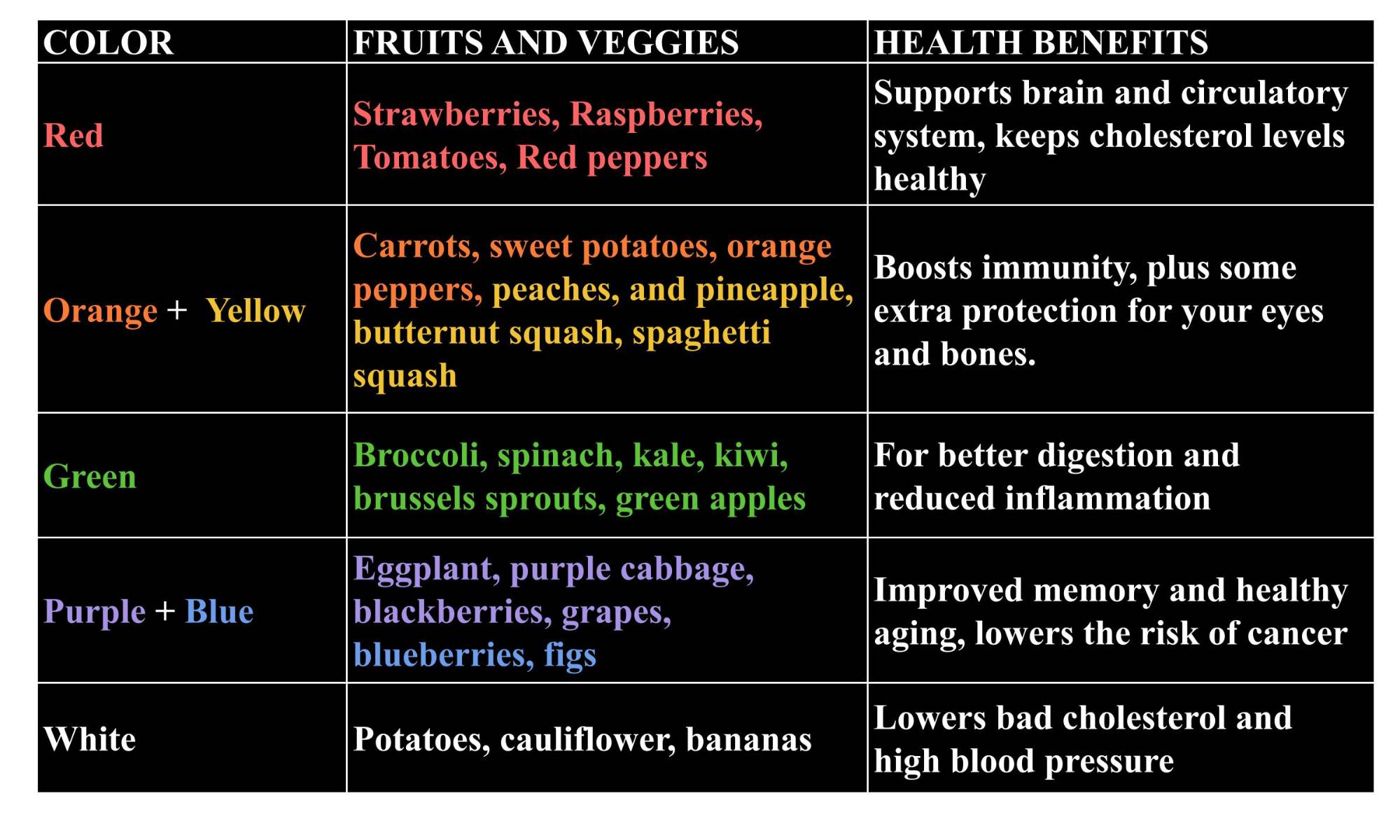
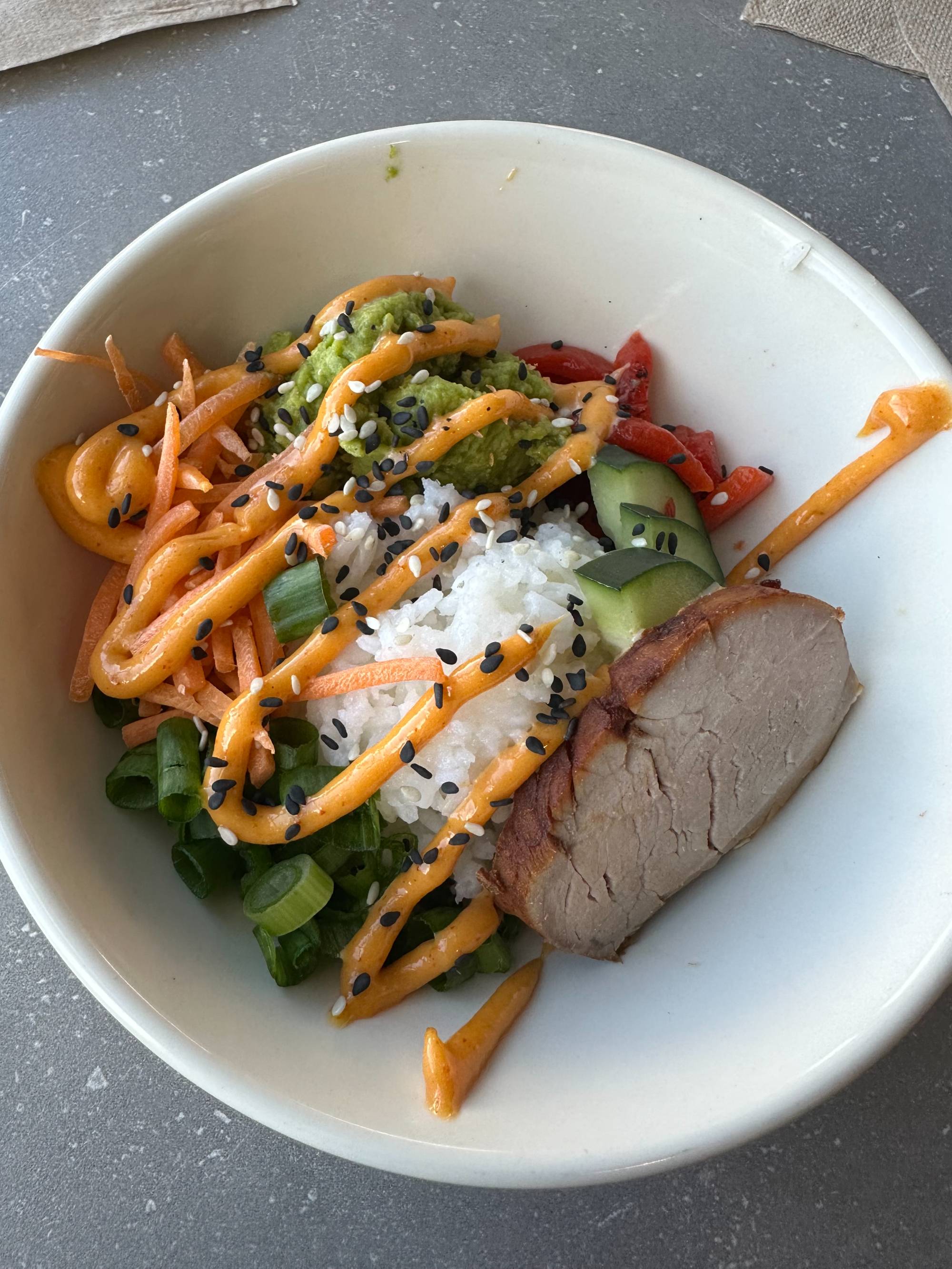

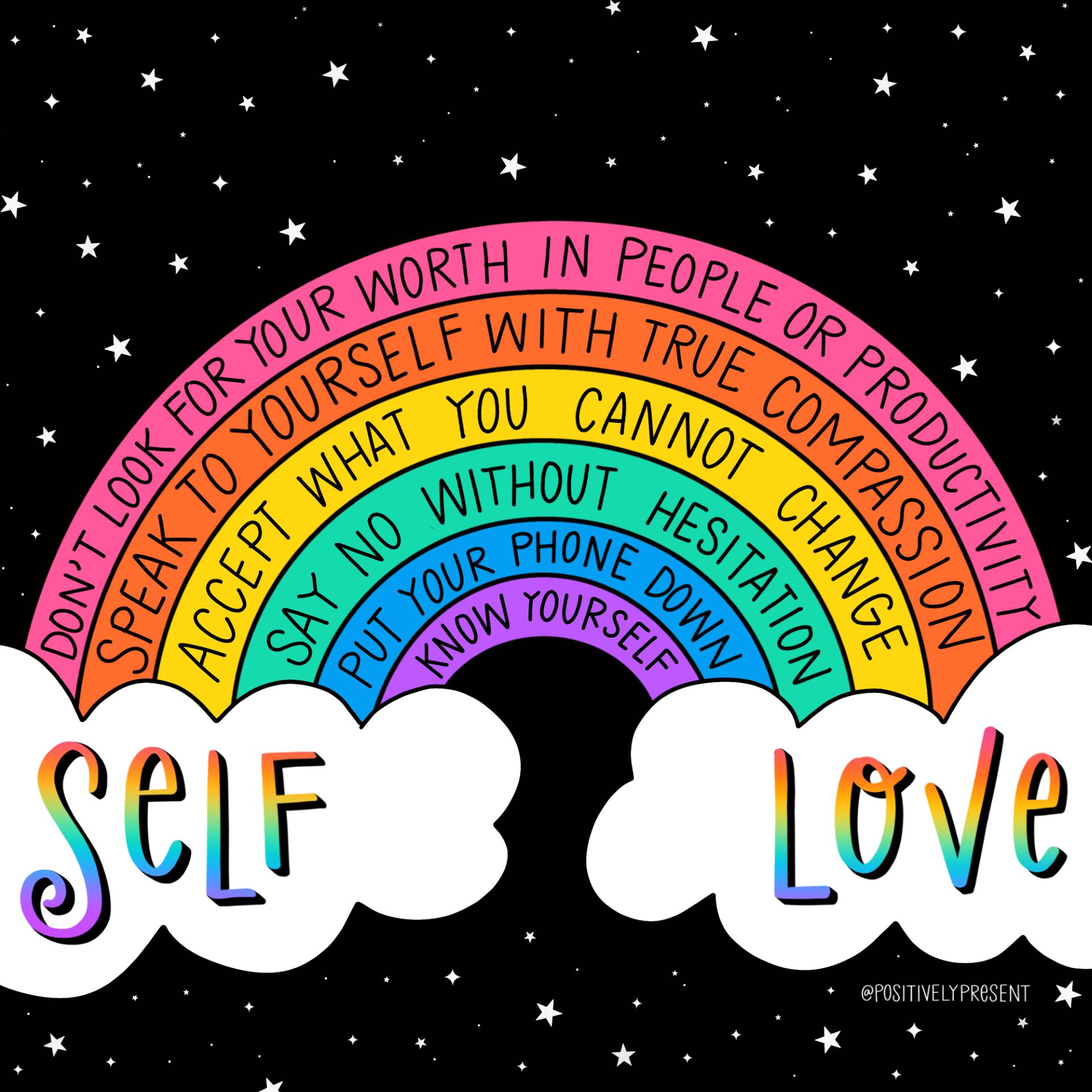
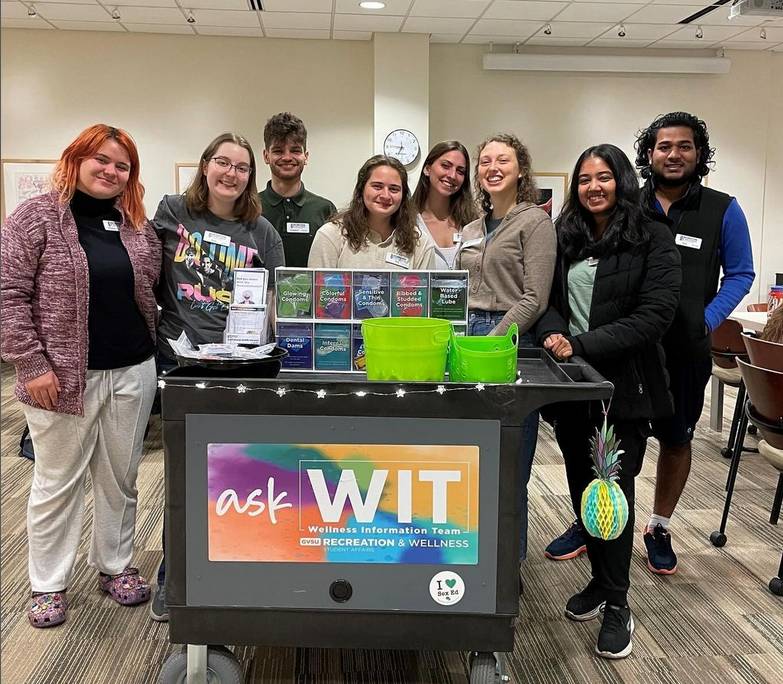
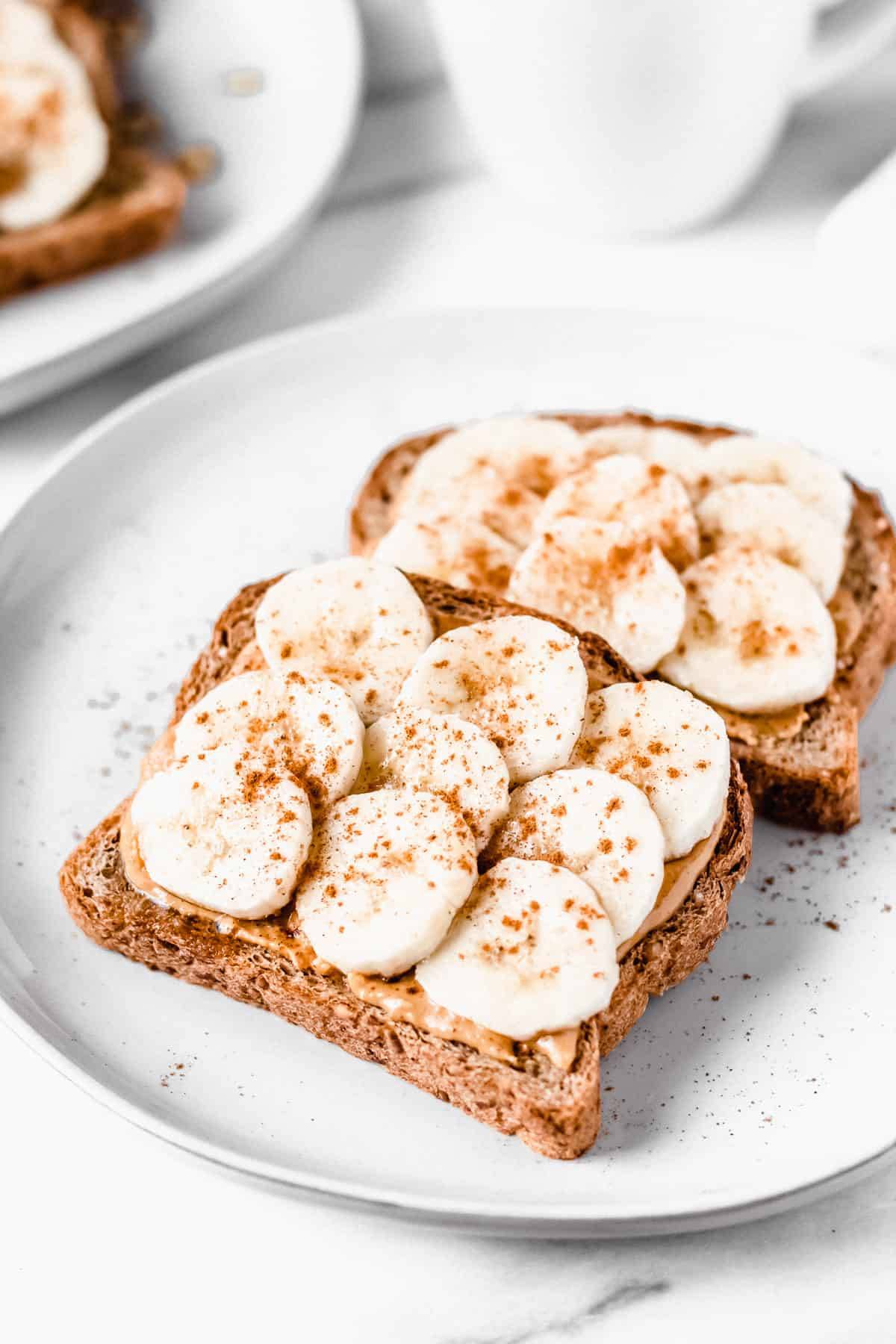
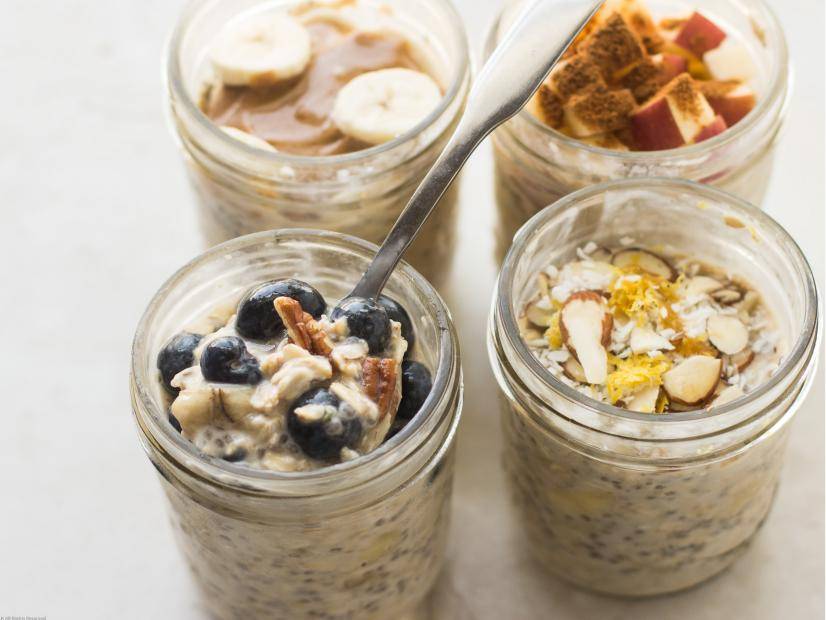



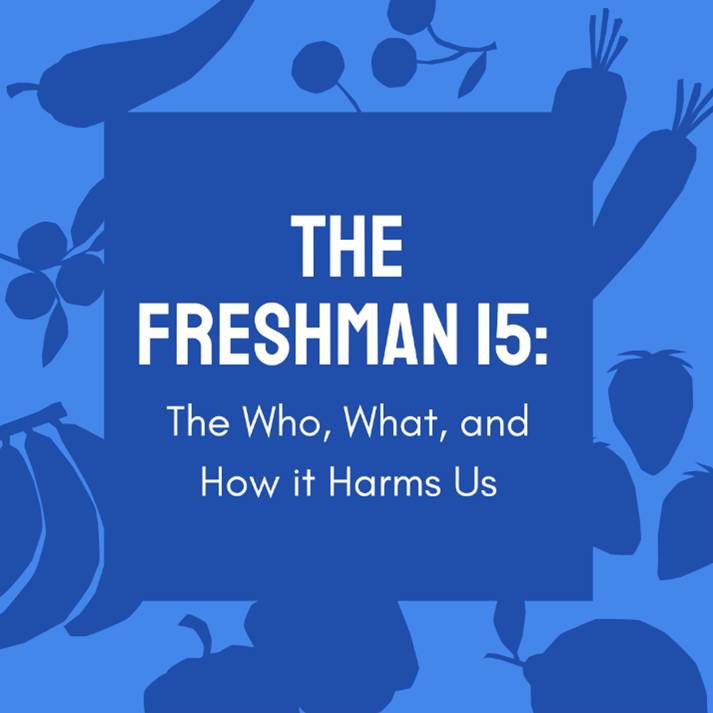
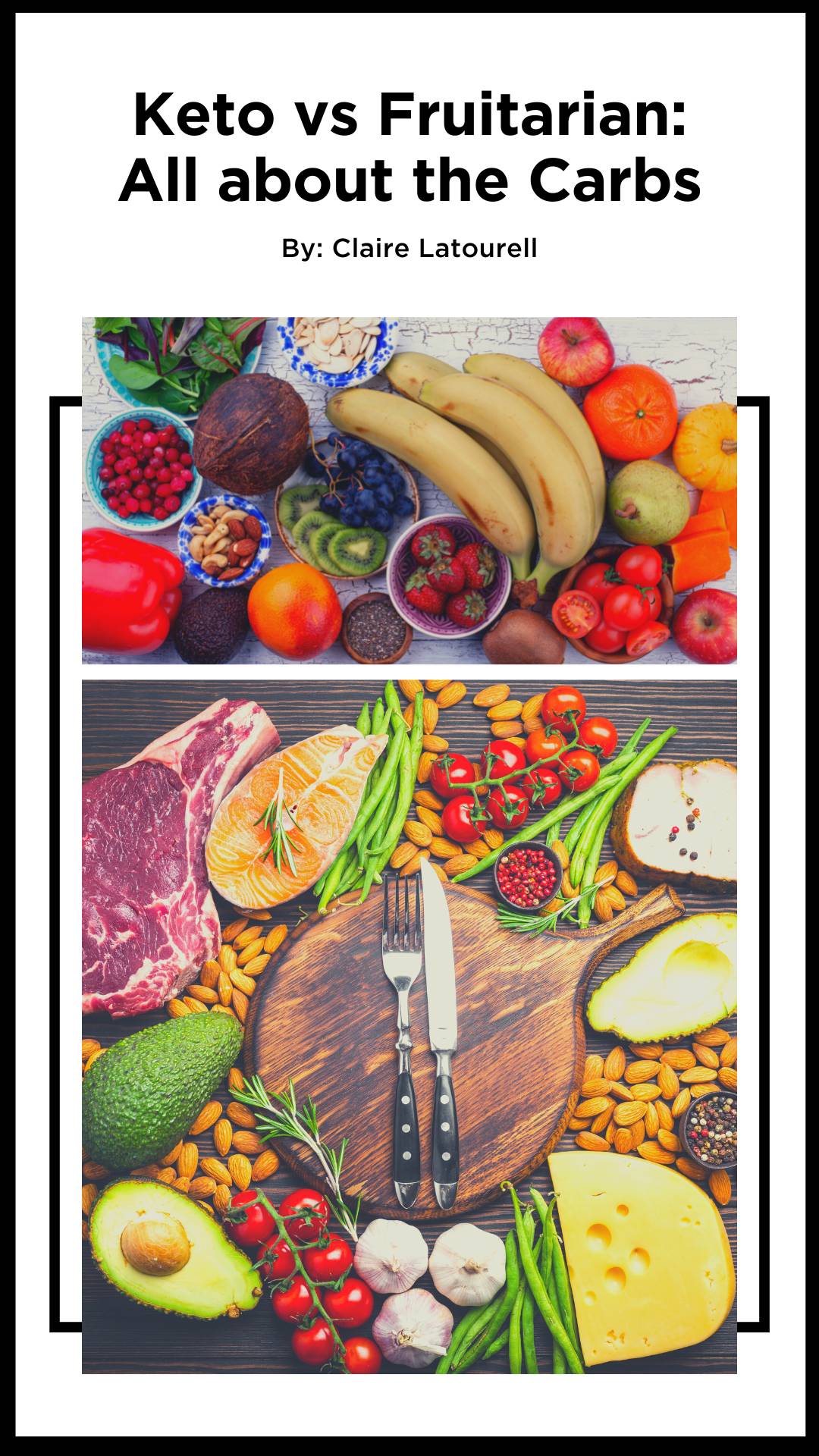
[1675439747].jpg)